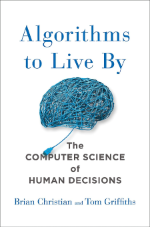Articles
Thank you, Evernote, for helping me take good care of my furry friend.
I would prefer not to share this story today, but real life is certainly not all roses.
My lovely dog, who is incapable of hurting a flea, was bitten yesterday. He was enjoying himself at the dog park when another dog rushed towards him and bit him for no apparent reason. To my untrained eye, that was a giant wound that terrified me to death. But later at the vet, I was told that everything was alright since it was only the skin that was cut. Regardless, almost 4 cm (1.5 in) still seems like a lot to me.
Needless to say, this broke my heart, and it took me a long time to fall asleep yesterday. To be honest, I’m still a bit shocked, and this is definitely a story I would prefer not to add to my Elephant’s Journal. But life isn’t always perfect, is it?
Anyway, it happened late at night, and his usual vet doesn’t have an ER. When we reached out to him, he suggested the one we ended up going to. But since this was our first visit to the place, they did not have a file with my dog’s information. His microchip helped with basic details and some vaccines, but Evernote played an important role as it’s where I keep his entire life history.
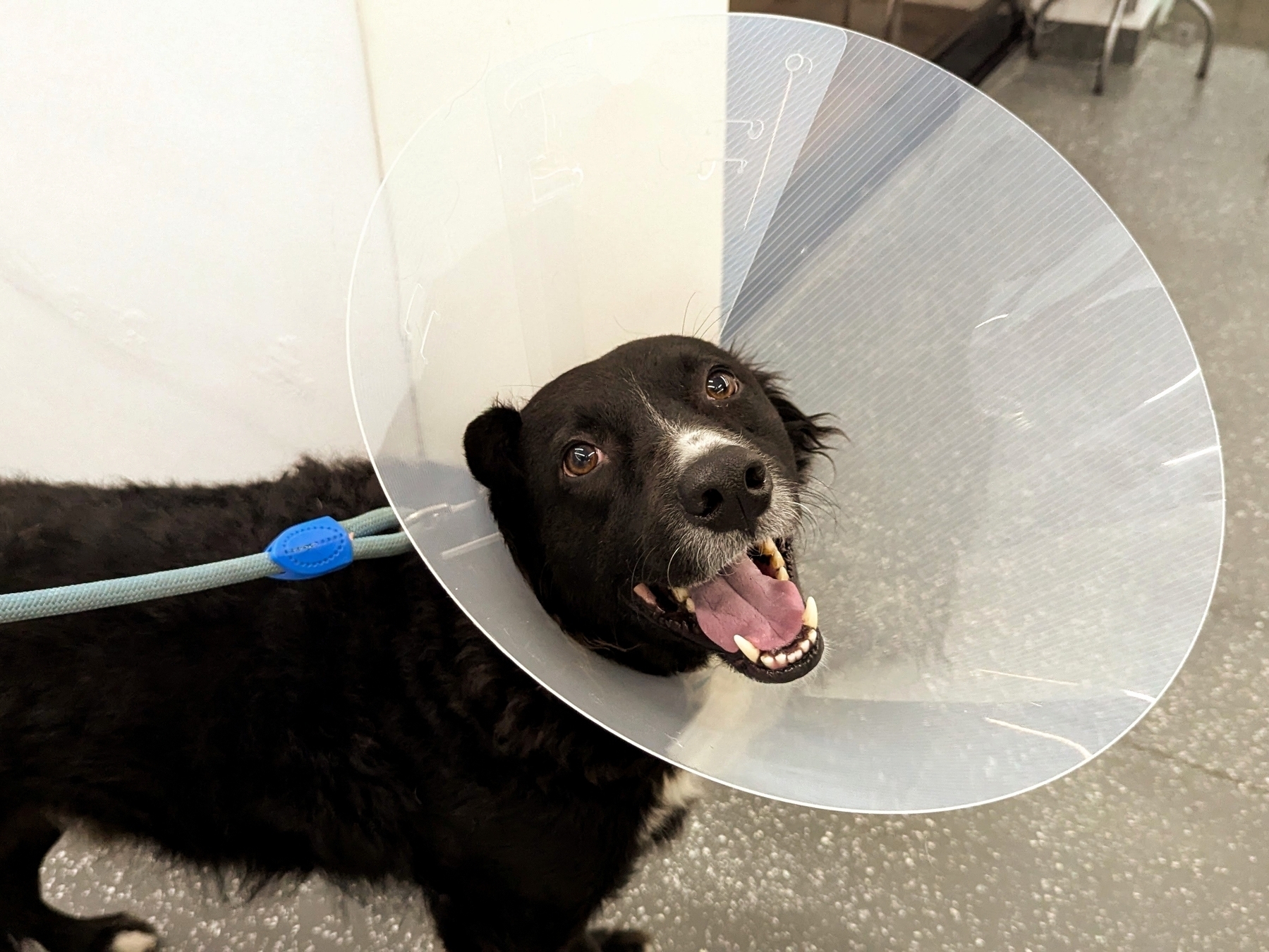
As I said in yesterday’s video, all my family documents are in the Family notebook. They all have at least two tags: Documents and the name of the person or dog 🐾 that document belongs to. His birth certificate, passport, vaccine card, etc. are all there. And they are all listed in the Documents note, with links back to each of the notes containing the documents.
So, I can either open the Documents note to see a list of the most used documents, or use the tag with his name to filter all his notes in the Timeline notebook.
Another note that I keep in the Family notebook is called Caffeine’s Routines. Yes, his name is Caffeine 🖤. This note starts with a list of all the veterinary appointments in reverse chronological order, linking back to the notes in my new Timeline notebook. All of them also have at least two tags: Caffeine and Veterinary.
Again, I have two options to get to the notes. I can either open the Caffeine’s Routines note to see the list and click on a specific item, or use the Caffeine plus Veterinary tags to filter and see all the notes.
Below that list, I have several tasks, such as his vaccinations and deworming. I even have a task to remind me to give him a bath 😊. All these tasks will automatically show up on the Tasks' widget I keep on Evernote Home.
There is also a link to the Caffeine’s Routines note in the Documents note. Yesterday, at the vet, all I had to do was open Evernote, which in my case is set to open on the Shortcuts page. From there, I taped on Documents (note) and had access to a list of his more relevant notes to answer all the questions the veterinary had.
When I got home, I used Evernote to scan the receipt and the veterinary recommendations, then added the Caffeine, Veterinary, and Health tags, and saved the note in the Timeline notebook. Finally, I added a link to that note to the list on the Caffeine’s Routines note. It took me less than a minute to update the information, which will give me peace of mind in the future.
I’m sure my furry friend will get better soon, but I’m still heartbroken. When I feel less stressed about all of this, I will make a video to better illustrate all the steps above. For now, please show your pet some love. These little guys are absolutely wonderful.
What went wrong with Evernote? How did we get here?
I expect negative comments on every video or article I publish about Evernote now. Sadly, talking about it makes me feel anxious.
I don’t think Evernote is doomed, but there is a profound shift in perception going on. It used to be that going to the Evernote Conference was the most important moment I looked forward to every year. It was great to see my friends, clients, developers, and the Evernote team.
Furthermore, sharing news from the conference or anything else Evernote released throughout the year had such positive vibes. Now, it’s difficult to ignore all the negativity out there.
But the mood didn’t shift at once; it rarely does.
It all started many years ago
In July 2015, Phil Libin stepped down as CEO, and Chris O’Neill initiated a series of changes that made many of us, myself included, uneasy with the future of the company, or, in other words, our notes.
Evernote had a family of companion apps, and the new CEO gradually discontinued most of them, making many of us unhappy. But moving Evernote’s database to Google Cloud and the layoffs kicked off the first negative wave I’ve ever seen. At least, I do not recall anything similar during the Libin years.
I have to believe that from a financial standpoint, moving to Google servers was the best course of action. Even Apple used Google’s service in the early stages of iCloud. And I think they still do. However, the public’s perception was distorted by the way the media covered all the other CEO decisions.
For instance, I recall reading articles that referred to Evernote’s headquarters as a “ghost town.” I was furious about that; it made no sense. Back when Libin was CEO, or, in other words, before the layoffs, I visited the company and can attest that the building was not fully occupied. As far as memory serves, floors one and two were completely empty. Not even desks! The idea was to have enough room to grow in the future.
Nevertheless, I can relate to the anger and frustration people felt. The way the story was told made it hard to tell the difference between noise and reality, which leads me to the topic of communication. I’ve always found Evernote to be terrible at conveying decisions to its users. And the problem is still present. For instance, I believe that transferring operations to Europe was an excellent decision, but again, the public perception was different.
When you are hosting people’s memories, you don’t have the luxury of being as secretive as Apple or carless as a cable TV announcing the new version of its app. Every decision has to be over communicated.
I’m not sure why, but one thing that made me upset was the end of Evernote Market. Possibly because some of the products made it easier to organize things in real life, like we were used to doing in Evernote. Anyway, I was sad to see that go.
[!cite] Over the past few years, more than 800,000 Evernote Moleskine notebooks and 300,000 Jot Script styluses were sold worldwide. Through Market’s website alone, we sold nearly 20,000 ScanSnap Evernote Edition scanners.
Market gave us the opportunity to illustrate the true value of Evernote to folks who hadn’t yet considered a Premium subscription. In fact, nearly half of the folks who shopped the Evernote Market were paying us for the first time.
Ultimately though, Evernote is a software company.
Communication, communication, communication. I don’t have all the facts, and I believe all of us try to make the best decisions based on the information we have available at the moment. But the way the official blog post was written suggests that the Market was successful, “but we are ending it anyway.”
As for:
[!cite] Instead of selling and fulfilling orders ourselves, on February 3rd [2016], we will transition the Market to promote Evernote-integrated products made and sold by our partners at Adonit, Moleskine, and PFU. We plan to continue adding partners and integrations that strongly and elegantly complement Evernote to that list.
The transition lasted for a brief moment. It didn’t take long before everything stopped being sold. I have many items in my collection, but the Evernote Market was much bigger.
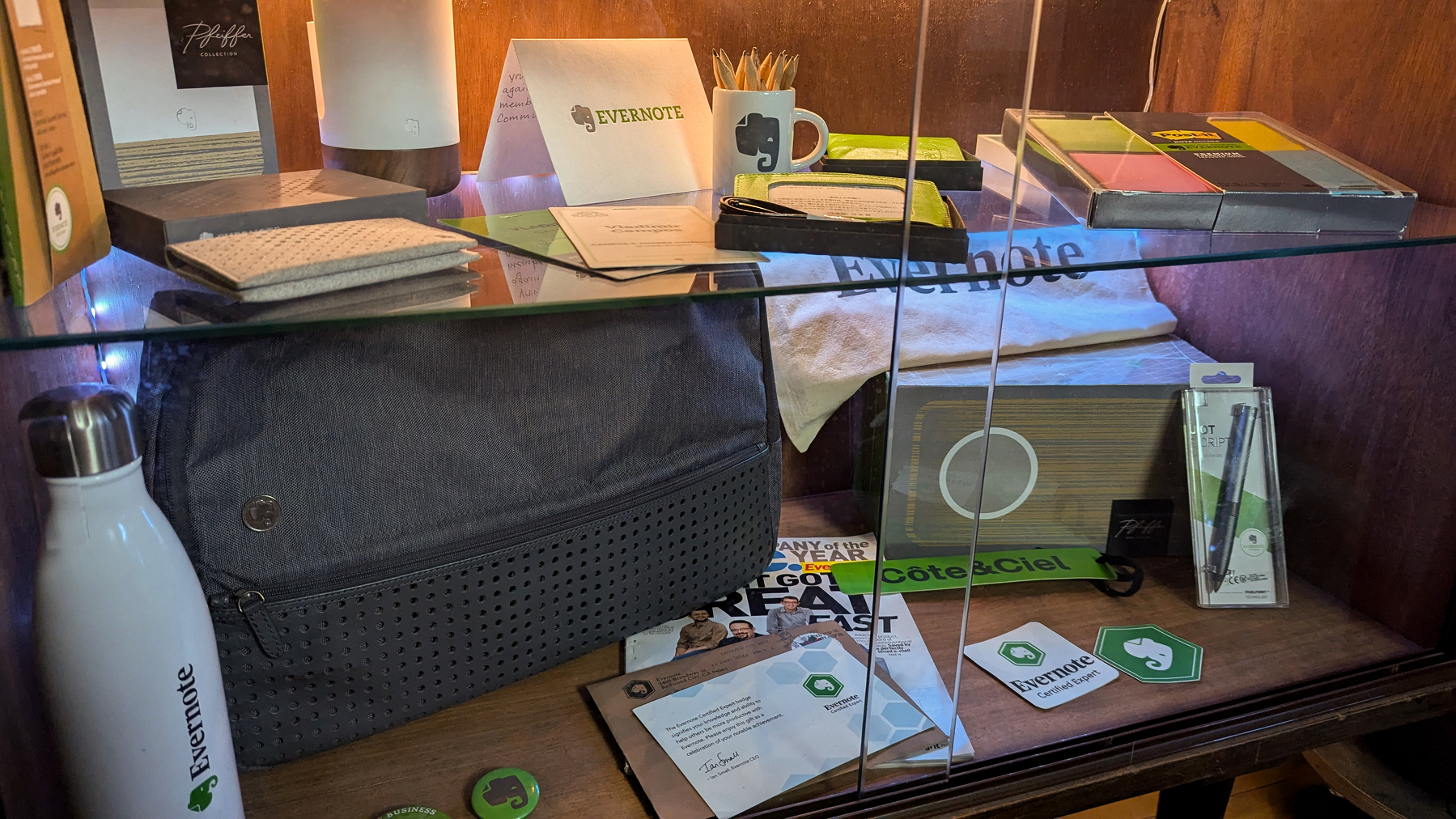
Recently, I learned in an interview with Libin that when he was the CEO, the Market was profitable, but its benefits went way beyond that. I messaged O’Neill on LinkedIn months ago, inviting him to an interview on my channel to talk about his time as CEO, but I never heard back.
The last thing I remember from O’Neill’s tenure as CEO was the fervor the company generated on social media to unveil a “fresh brand identity”. Once again, the issue of communication was affecting Evernote. There was a lot of criticism about spending time and money on a logo instead of addressing the problems with the app.
Regarding the old logo, did you know that the elephant trunk is hiding the letter e?

A frustrating web client
If you are a subscriber to my YouTube channel, you know that I try crazy experiments all the time. Well, back in 2018, I tried to run my entire consulting business on a Chromebook. The Chromebook paired with Google Workspace and Trello performed exceptionally well, but the Evernote web* client, which was limited at the time, ended up being a major drawback in my plan.
* It should be noted that the decision to oversimplify the web client was taken when Phil Libin was CEO.
My experiment and what was going on with Evernote (the company) at that time made me think about switching to a different app for the first time. My consulting business is about helping companies build mindful Kanban workflows using tools like Trello, so I thought Notion would be a perfect fit for my notes and Kanban workflows.
I moved some of them, played with Notion for a while, and made couple videos for my YouTube channel in Portuguese, but even though I love all the cool stuff Notion has to offer, the database vibe doesn’t appeal to me. If I were to switch to a different app, note-taking would have to be its main feature. Perhaps that is the reason why I am currently enjoying Obsidian.
Ahead of its time?
Sometimes I catch myself thinking about Evernote’s series of managerial missteps along the way, but analyzing events in hindsight is always unfair. Other times, I believe the problem was timing. It is possible that Evernote was too ahead of its time and didn’t find a way to use this advantage in its favor.
For instance, a couple of weeks ago, I decided to test the Obsidian Map View plugin, and I couldn’t stop wondering why Evernote removed the fantastic map feature the app had back in the day.
Most people don’t even know this, but when we create a note, the app always attempts to save the coordinates of where the note was created. Evernote map view would simply show all notes with coordinates on a map. That’s it. We didn’t have to deal with any configuration.
It was a great feature, as were many others that were discontinued. In contrast, the Obsidian Map View plugin is difficult to set up, but at least it exists for people like me who want to see their notes on a map. Why? Well, you should watch the video below to be amazed by how many interesting use cases people can come up with this feature.
Evernote even had AI back in 2014, but the “A” stood for augmented. Features like context and handwriting OCR were among the many innovations the company came up with. To learn more about the challenges and the ideas they had for the future, I encourage you to watch my interview with Phil Libin on this topic.
Even today, with so many of these marvels gone, it’s still hard to find an app that’s both easy for non-tech-savvy people to use and that also packs in so many useful features.
But when a company stops innovating, others will take over. Steve Jobs famously said that if Apple hadn’t taken the iPod’s market share with the iPhone, other companies probably would have.
Do you remember?
Did you know that back in 1999, in the days of dial-up and DSL Internet, there was a service called Yahoo Briefcase that would create a ‘Y’ drive in our computers and allow us to synchronize files to the cloud?
That’s correct; Yahoo had it many years before Dropbox. But I bet that young people believe that Google and other companies invented services pioneered by Yahoo. The book “Marissa Mayer and the Fight to Save Yahoo!” has some chapters about how Yahoo missed the chance to be even bigger than today’s version of Google. Instead, it ended up as a Verizon subsidiary with a financial channel on YouTube.
Palm’s path was much harder than Yahoo’s. They were inventing a new market, and if that wasn’t tough enough for the team to deal with, the company went through numerous ownership changes and never found its way to a stable future. It’s mind-boggling to me that an entire generation is unaware of the remarkable products this company invented.
If you believe that the idea of having a personal assistant in your pocket was created by Apple with the iPhone, here is a good book for you: “Piloting Palm: The Inside Story of Palm, Handspring, and the Birth of the Billion-Dollar Handheld Industry.”
The Apple II was the first computer I owned as a teenager, but my Palm PDA and Yahoo services were tools I used professionally for a long time, and I still miss some of Palm’s features. I wish these companies had continued to evolve, but, as I mentioned before, market forces cannot be controlled.
A bright future?
The year is 2018, and here we go again. Evernote has a new CEO, Ian Small. I’d say his main accomplishment was solving a problem that no one else had the courage to deal with before him.
Evernote had apps for Android, iOS, Mac, Web, and Windows, but I always referred to them as “versions” because they were so different from each other. The original management team had a reason for this approach, but in retrospect, it never worked well for us, the users. For instance, formatting a note using one of these “versions” would, more often than not, break it in another. However, I believe the worst consequence was that it slowed down innovation.
Evernote 10 was a necessary evil that created so many complications for the end user. It had to be done. It was a long-overdue project. Furthermore, it took longer than expected, and it was hit by COVID-19. And, again, more features were removed from the app.
Can you see a pattern here? From a user’s perspective, Evernote is constantly removing features and working to fix new bugs.
But for the first time, Evernote established an astonishing channel of communication with its users. The behind-the-scenes videos with the CEO, the blog posts, and many other projects created a new kind of collaboration between us and the company.
Small’s courage to rewrite all the clients was both bold and necessary. But it also means that from a technical standpoint, Evernote 10 was an entirely new app, and like every new piece of software, there may be several unknown bugs.
The good news is that 10 opened the doors to innovation. Evernote Home and its great widgets, such as the calendar and filtered notes, tasks, notes filters, and backlinks, came after 10 was introduced. Even the Real-Time Editing feature was being worked on by Ian’s team for many, many months before the Bending Spoons acquisition.
There are frequent complaints about bugs, but the way I see it, Evernote had no other options. They had to deal with the multiple apps that were incompatible with each other. It was either no more innovation or dealing with some bugs for a while.
However, my concern is somewhat distinct. I think Small’s decision to move development towards the “Accomplish Anything” vision was a great idea. The new features his team created brought our notes to the next level, and the way he spoke about Evernote was a clear indication that many more similar features would be coming. Unfortunately, I have no idea what Bending Spoons plans are for Evernote.
I am a fan of Small and his accomplishments, but what I hope to understand one day is why the company was sold. Was it his decision? The board’s? Was it an offer? What happened?
The Bending Spoons era
I have no doubt that Bending Spoons is working hard to fix all the problems they inherited, but they may be running out of time. The bugs, along with the layoffs, price increases, and other unpopular decisions, may be hurting Evernote credibility too quickly. To add more salt to the injury, the connection Small’s team built with the community by being so transparent is slowly disappearing.
I believe Bending Spoons has everything it takes to make it right, but only time will tell if they will be able to replace the iPod with the iPhone or end up like Palm, Yahoo, and so many other fascinating companies that are long gone.
Without experiencing the unknown variables, it’s impossible to organize efficiently
I believe the best way to organize things, whether they’re physical or digital, is to accept the mess for a while. At least it works very well here. That’s why my strategy for organizing things is to always start with a messy environment, a blank canvas to play with. However, there’s a catch: I have to pay close attention to what I’m constantly searching for and using.
It is only after rearranging things again and again and learning my necessities that I am finally ready to begin building the system that will meet my needs. But, there is no doubt in my mind that that will not be the final version. The world around us constantly changes, and we must adapt to keep up.
The tricky part is figuring out the exact moment when the messy stage has to give way to some order. I like to use a concept I borrowed from economics: Transactions Costs. In other words, if the mess is making me less and less productive, it’s time to pause and organize by choosing the best workflow I’ve come up with so far.
If you haven’t already, I encourage you to watch the video below. It’s about an Evernote notebook being built from empty to fully functional. It started out messy, and I added tags, links, etc. as I learned what I was constantly looking for and using.
And like I said before, it’s a strategy that works in both the digital and physical worlds. Last week, I finally organized my workbench, inspired by the way I moved objects around when I was working on the Apple IIe restoration project. I’m pretty happy with the final result, but I already had new ideas for it.
The messy approach is also a way to foster creativity. There are many good books about this subject. There’s one literally titled Messy, but The Click Moment and Algorithms to Live By also discuss it.
Moving things around forces us to look at a problem from a different perspective, which helps us come up with unexpected solutions. But it is important to keep in mind that the project on which we are currently working is not our sole concern. In my case, the messy workspace was also a project in progress.
Take a look at the shelf and the soldering station; they are all made from scrap wood. By the way, I love that cool industrial vibe. You can even tell from the black circles on one of the shelf legs that the piece of wood was once below the table glass. It was a test; I was trying to figure out how many crossbars I needed to keep everything stable, and I ended up replacing the studs with the thicker ones that are there now. As for the rest of the replaced pieces of wood, they were used on other projects.
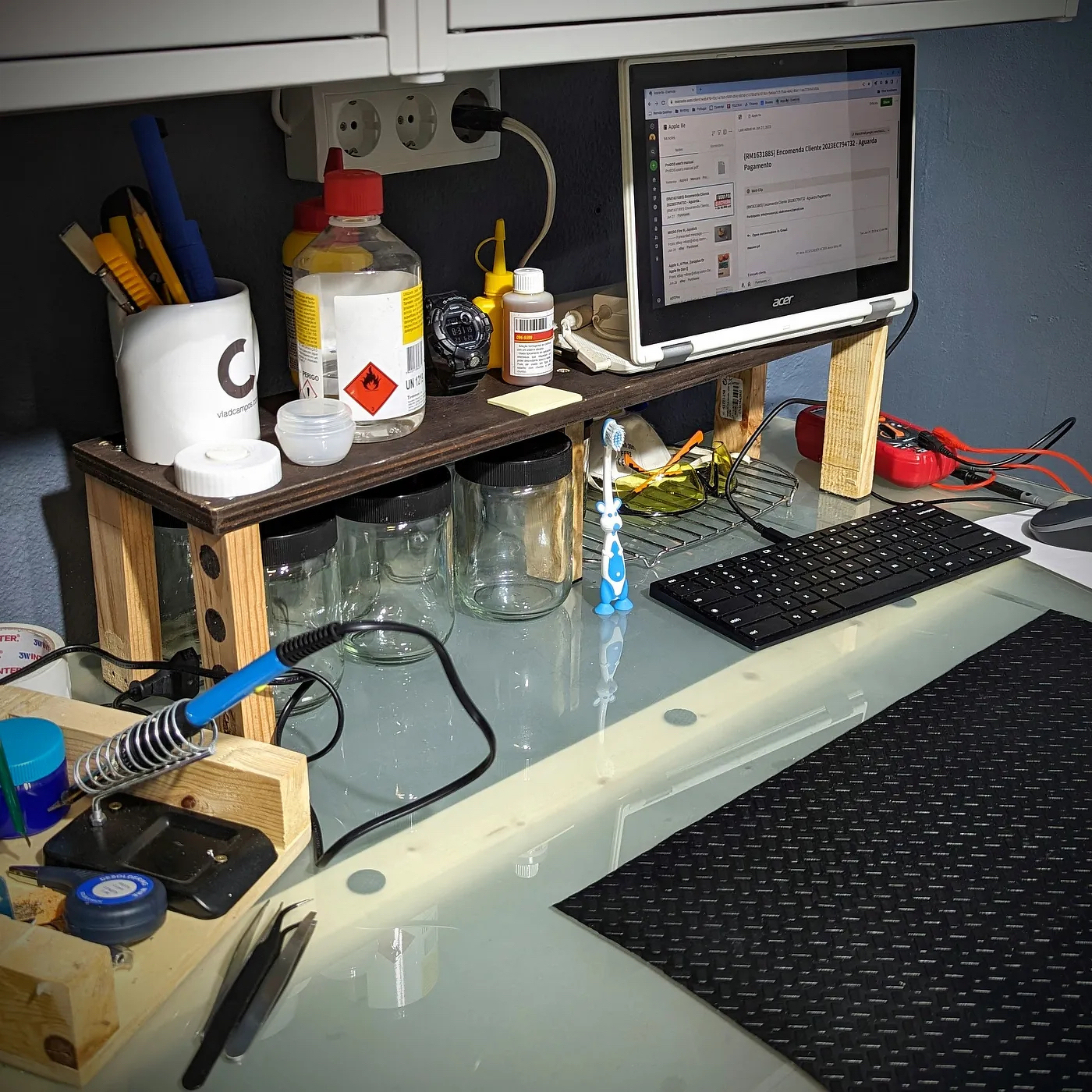
But there are more repurposed materials. The desk itself is made up of the top glass of an old kitchen table, supported by some cheap Ikea trestles. As for that Chromebook, it will not get Chrome OS updates anymore, but it is still good enough for Google searches and the Evernote web client.
So, the next time you are working on a complex project, don’t be too hard on yourself. Every so often, a little mess is what you need to unlock a solution that was always there, but you couldn’t see.
By the way, switching to another project also works, but that’s a story for another time.
Evernote and other technologies I used when I was in Morocco
When we entered the boarding area, my wife realized that she had forgotten her phone. In other words, gone were all the messages the travel agency had sent her. Thankfully, Evernote saved our trip to Morocco. At that point, we were unable to go back home and return in time, so I opened my Travel notebook on Evernote to assess the situation. But before I go any further, let me provide you with some context.
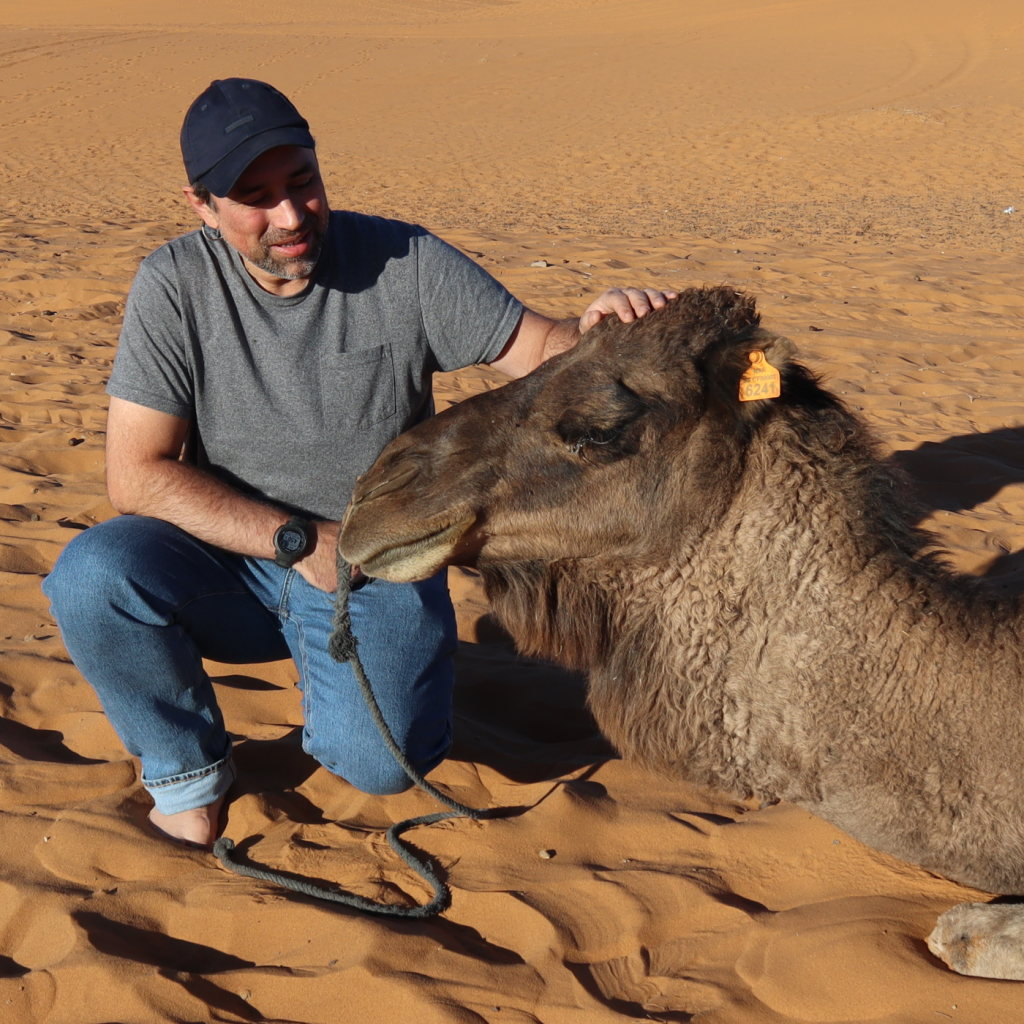
Usually, I am the one who organizes our trips, but this time it was different. My wife was doing it. On my side, as I have already shown in past videos, I was saving on Evernote all that she was sending me. Also, I am not a WhatsApp user.
Back to the airport
I had our boarding passes and all instructions in offline notes, but here’s my question. Why would a travel agency send all the information to its clients using WhatsApp instead of email? Also, why would the clients trust WhatsApp with all that information? And I’m not even talking about privacy. I’m talking about access.
Without a phone, which can be lost, broken, or stolen, there is no way to access the messages. However, on a public computer, one can open and even print information using the web client of an email provider or notes saved on Evernote, Google Keep, or others.
I’m convinced that this addiction to WhatsApp has already gone too far and caused many people serious problems. A few days ago, I even saw an article suggesting that people use the note-to-self feature to take notes.
NO! Please do not do this.
If you are not interested in dealing with all that Evernote or similar Apps have to offer, use Google Keep. It’s simple, and you’ll be able to access your notes even without your phone.
Okay, that’s that.
But, since we are here, I would like to share with you the other technologies that made our trip a success, even though we did not buy a local SIM-Card.
Google Maps
You have to do this before loosing Internet connection. Go to settings, select the ‘Offline Maps’ option, choose an area and download it. From now on, even if you do not have Internet access, that map will be available. But there is a caveat: there are no turn-by-turn directions.
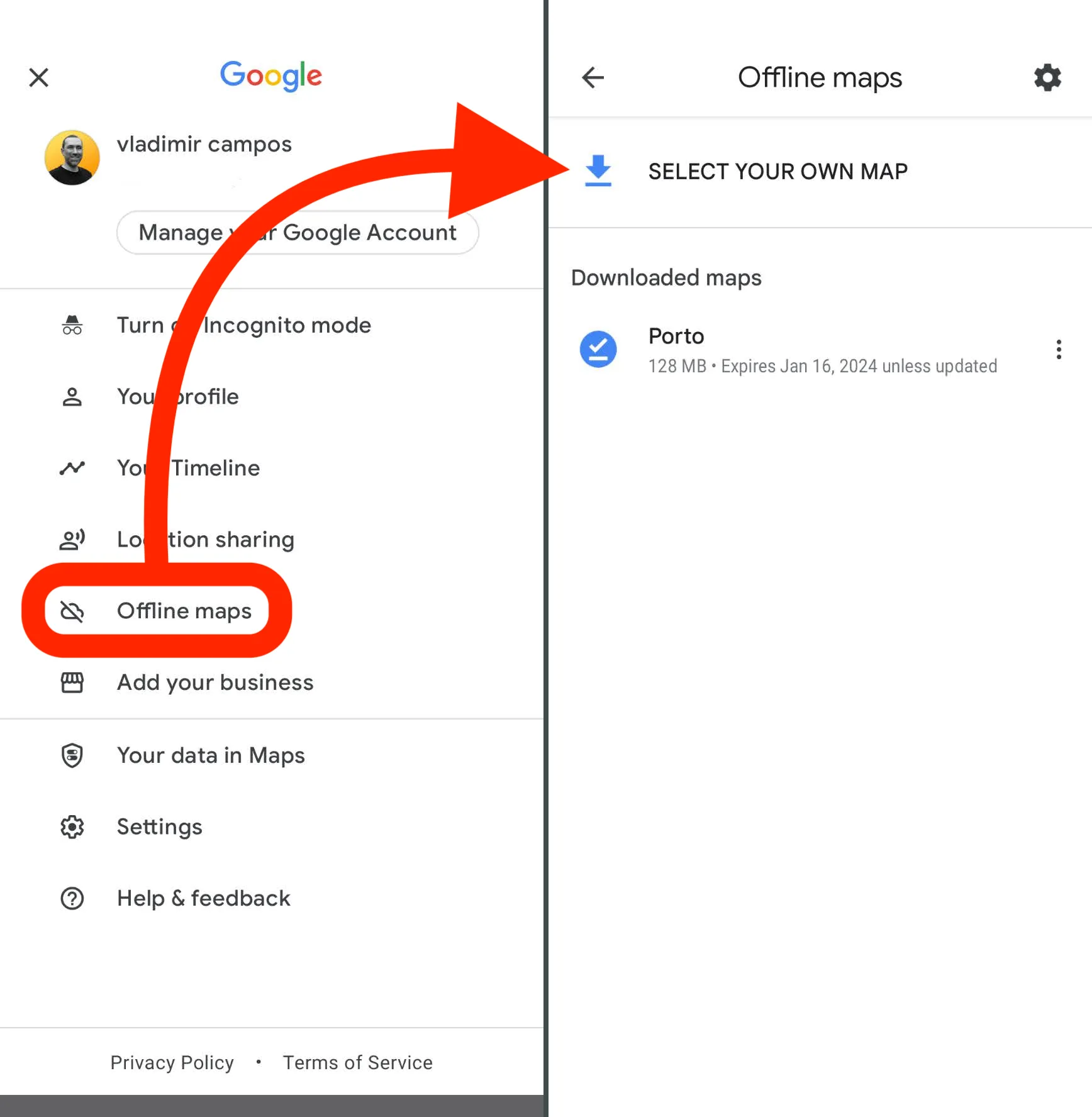
The GPS will still work, and you’ll see the blue dot moving on the map. If you are walking as we were, it is pretty easy to follow a route towards your destination. Nevertheless, I’m not certain how efficient this would be for driving.
Google Translate
Just like Google Maps, we can download dictionaries on Google Translate. Before the trip, open the App on your phone, select one or more languages and tap the icon with an arrow pointing down.

For this trip, I downloaded the Arabic and French dictionaries, which were quite helpful.
Canon App
I love the way Google Photos plots all pictures on a map, and there is also a practical use. I often forget a restaurant or another place location, and finding the address is as simple as opening the photo and selecting ‘Open in Google Maps’.

For this trip, a brought my Canon, that doesn’t have a GPS. To fix this, I installed the Canon Camera Connect App, which connects to my phone via Bluetooth and uses its GPS to obtain the location of the pictures I was taking.
Garmin Instinct 2
This one was just for fun. I used my Garmin Instinct 2 to track all our walks, and at the end of each day, I saved the map in Evernote with some statistics, and a picture of the watch showing how much battery was left.
Each day, we walked more than 10 km, and I’m now even more impressed with the battery of this watch. You can learn more about my decision to buy it by clicking here.

Although I wasn’t expecting to need this, I added the hotel’s location to my watch, so I could navigate back there. Google Maps worked great, and we ended up memorizing our way back, but I had to try it. One day I did use the watch to go back to the hotel. It worked like a charm, and the geek in me loved it.
It’s better to be disconnected
My wife and I love to travel, but since the end of the lockdown, we’ve been only traveling within the EU. With the single currency, no border checks, and free roaming, things are too easy. There is no need to prepare thoroughly.
It’s great that we can just pack and go, but ultimately, you feel like you never really visited another country.
Morocco was, however, a different story. I went back to being prepared-for-anything mode, read a lot about it and watched some documentaries. Furthermore, without a local SIM-Card, we were disconnected from home most of the time, and we felt really immersed in an entirely different culture.
